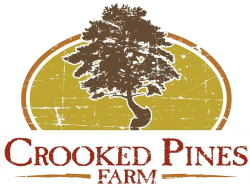
The diverse community of animal residents at Crooked Pines Farm march to the beat of their own internal clocks, expertly synchronized with the farm’s environment. From the first rooster’s crow at dawn to the peaceful lull as the sun sets, each creature adheres to a finely tuned schedule, driven by innate circadian rhythms and responsive to the farm’s dynamic environmental cues.
Timekeeping Mechanisms
At the core of the animals’ daily patterns lie their circadian rhythms – the 24-hour cycles that regulate physiological processes. These internal clocks are precisely calibrated, responding to factors like sunlight, temperature, and even the Earth’s magnetic field. The farm’s livestock and poultry have honed these rhythms over generations, expertly aligning their sleep-wake cycles, feeding times, and other behaviors with the natural rhythms of Crooked Pines.
The animals also rely on environmental zeitgebers – external cues that entrain their circadian clocks. The first morning light, the midday heat, the fading dusk – each prompts a cascade of hormonal and neurological changes that trigger specific behaviors. A rooster’s crow at dawn, for instance, signals the start of the day for the entire farm, as chickens, sheep, and cows arise from their slumber to begin their daily routines.
Sleep-Wake Cycles
While most of Crooked Pines’ animal residents follow a diurnal (daytime active) schedule, aligning with the human farmers, a few species take on a nocturnal (nighttime active) lifestyle. Owls, for example, can be spotted gliding silently over the pastures after dusk, hunting for prey while the rest of the farm slumbers.
Some animals, like the farm’s Nigerian Dwarf goats, employ a polyphasic sleep pattern, napping throughout the day rather than adhering to a rigid awake-asleep cycle. This allows them to maximize their time spent foraging and socializing, with short rest periods interspersed. The farm’s guardian dogs, on the other hand, display a more consolidated sleep-wake rhythm, alert and active during the day to protect the herds, then resting deeply through the night.
Animal Residents
Farm Animal Species
Crooked Pines is home to a diverse array of livestock and poultry, each with their own unique behavioral patterns and needs. The dairy cows and beef cattle spend their days grazing peacefully in the lush pastures, chewing their cud and ruminating as they move across the landscape. In the evening, they return to their shaded loafing areas to rest and socialize.
The heritage-breed chickens, turkeys, and ducks can be found scratching and foraging throughout the day, taking dust baths and perching in the coops as night approaches. The sheep and goats, with their sharp eyes and nimble hooves, navigate the hilly terrain, pausing to graze on the varied browse and grasses. Even the farm’s working dogs and barn cats have their own essential roles, tirelessly patrolling the grounds and providing pest control and livestock guardian duties.
Behavioral Patterns
Each animal species exhibits distinct behavioral patterns shaped by their evolutionary adaptations and the farm’s environment. The cows, for instance, are ruminants, meaning they regurgitate and re-chew their food to maximize nutrient absorption. This process, known as rumination, can occupy up to eight hours of their day.
The poultry, on the other hand, are preening and dust bathing regularly to maintain the health and insulation of their feathers. Chickens, in particular, are highly social creatures, establishing complex pecking orders within their flocks. The sheep and goats demonstrate remarkable herd and flock cohesion, moving and grazing in synchronized patterns for safety and efficiency.
Habitat and Environment
Crooked Pines Farm Ecosystem
The animals at Crooked Pines thrive in the farm’s carefully curated natural environment. The pastures and enclosures are meticulously managed to provide ample forage, browse, and water sources, tailored to the unique needs of each species. Shelters, like the barns, coops, and run-in sheds, offer protection from the elements and predators, allowing the animals to rest and ruminate undisturbed.
The farm’s pond, streams, and watering troughs ensure that the livestock and poultry have ready access to clean, fresh water throughout the day. Strategically placed within their habitats, these water sources become focal points for the animals’ daily activities, from drinking to cooling off during the hot summer months.
Resource Management
Maintaining the delicate balance of the farm’s ecosystem is a constant priority. The farmers closely monitor the animals’ nutritional needs, adjusting their diets and supplementary feeds as the seasons change. They also ensure that the pasture rotation allows for ample regrowth, preventing overgrazing and promoting soil health.
The farm’s waste management systems, including composting and manure spreading, transform the animals’ byproducts into valuable organic matter for the vegetable gardens and orchards. This closed-loop approach minimizes resource waste and supports the overall resilience of the Crooked Pines ecosystem.
Seasonal Adaptations
Phenological Changes
As the seasons shift at Crooked Pines, the animals’ behaviors and physical characteristics undergo remarkable transformations. In the spring, the farm’s breeding and lambing/kidding seasons bring a flurry of activity, with newborn calves, lambs, and kids joining the established herds and flocks.
The animals’ coat and plumage also undergo seasonal changes, with thicker, insulating layers emerging in the winter months and shedding in the spring. This natural adaptation helps the creatures regulate their body temperatures and conserve energy as they navigate the farm’s temperature extremes.
Climate Resilience
Crooked Pines’ animal residents have evolved impressive strategies to weather the region’s fluctuating temperatures, precipitation, and weather patterns. The farmers ensure that the animals have access to shade, windbreaks, and shelter to protect them from the harshest conditions.
During periods of intense heat, the animals may alter their daily routines, seeking out watering holes and wallows to cool down. In the winter, their dense coats and the farm’s well-insulated structures help them retain body heat and conserve energy, ensuring their continued health and productivity.
By closely observing the animals’ rhythms and routines, the Crooked Pines farmers gain invaluable insights into the delicate balance of their farm ecosystem. This deep understanding informs their management practices, allowing them to cultivate an environment that supports the unique needs of each resident species while fostering an enduring, resilient community.


